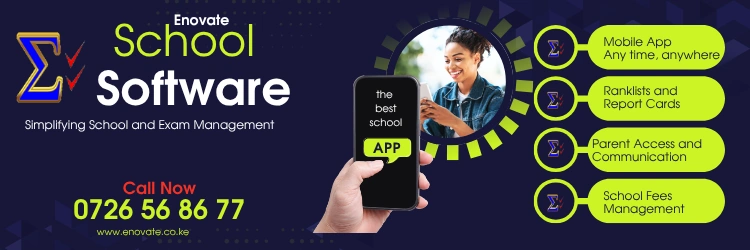Introduction
Professional documents are official documents developed to make learning efficient and effective as the teacher implements the Curriculum.
Development guided by the curriculum designs thereby enhancing the teacher’s understanding of the designs.
Lay the foundation for sound administration, planning, evaluation and monitoring of curriculum delivery.
Teachers should prepare and use the professional documents in their day-to-day teaching.
Types of Professional Documents
- Schemes of work
- Lesson plan
- Record of work
- Individualised Education Programme
Schemes of work
- Developed from the curriculum designs
- Plan of how learning shall be organised within the allocated
time
- Allows the teacher to manage the time appropriately
- All aspects of the learning process are thought through in
Advance
Components of a scheme of work
- Specific Learning Outcomes
- Learning Experiences
- Key Inquiry Questions
- Learning Resources
- Assessment
- Reflection
Lesson Plan
- A lesson plan is a breakdown of the scheme of work into teachable units.
- It shows what needs to be accomplished within the time allocated for the lesson.
- It enables the teacher trainer to contextualise the lesson activities at a glance.
- Adopt inquiry-based learning techniques when planning, since they are learner centred and key to successful implementation of the Competency Based Learning.
- Establish the learning outcomes to be achieved during the lesson.
- Consider the learners’ ability, background and learning approach to use among others.
- Ensure the availability of relevant and appropriate materials for the lesson.
- Determine appropriate assessment methods to use.
- Lesson notes should be prepared for every lesson as they accompany the lesson plan.
Factors to Consider when Developing a Lesson Plan
- Age of the learner
- Nature of the learner
- Level/grade/year of the learner
- Learner’s entry behaviour
- Available learning resources
- What will be learnt
- Learning environment
Other aspects to Consider when Developing a Lesson Plan
1) The specific learning outcome(s)
2) Learning experiences: how the specific
learning outcome(s) will be achieved
3) Key Inquiry Question(s)
4) Integration of ICT in the lesson plan
5) Learning Resources
6) Core competences to be developed
7) Values
8) Assessment: a way of measuring
how well the outcome was attained;
test, worksheet and homework
among others
Components of a Lesson Plan
- Strand
- Sub strand
- Specific Learning
Outcomes
- Key Inquiry Question
- Learning Resources
- Organisation of learning
- Introduction
- Lesson development
- Step 1
- Step 2
- Step 3
- Extended Activity
- Conclusion
- Reflection
Organisation of learning
- Where will it take place?
- How will learners be organised? e.g. group work, pair work
Extended Activity
- These are activities that will be given in the form of assignment, take away etc. Since some of the learning outcomes may not be achieved within the allocated time, e.g. project work, creative writing etc.
Record of Work
Provides evidence of work covered by the teacher
Components
- Administrative details
- Time frame
- Lesson
- Work done
- Reflection
- Signature
Importance of Records of Work
- Provides evidence of work covered by the teacher and ensures. accountability and transparency of work covered by the teacher
- Involves storing and managing records appropriately so that the information will be available when needed.
- Provides continuity of teaching of a particular class since a new teacher is able to trace where to start teaching a class.
- Allows both teacher learner to reassess the teaching-learning relationship.
- Helps identify the learner who needs more help, guidance and support and helps them understand what they need to do next to improve their work.
- Effectively monitor the progress of the teacher, for planning and decision making.

